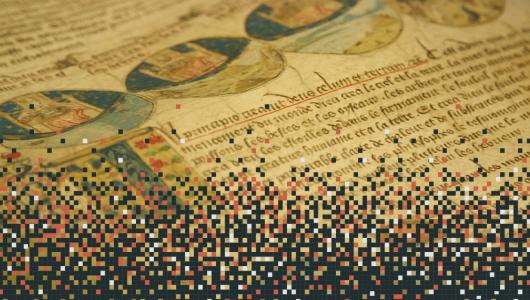
Develop skills in digital research and visualization techniques across subjects and fields within the humanities.
What you’ll learn
- What the term “digital humanities” means in different disciplines.
- How common digital tools work and examples of projects using them.
- How various file types can be used to create, gather, and organize data.
- How to use command-line functions to analyze text.
- How to use free tools to create visual text analysis.
Course description
As primary sources of information are more frequently digitized and available online than ever before, how can we use those sources to ask new questions? How did Chinese families organize themselves and their landscapes in China’s past? How did African slaves from different cultures form communities in the Americas? What influences informed the creation and evolution of Broadway musicals? How can I understand or interpret 1,000 books all at once? How can I create a visualization that my students can interact with? The answers to these questions can be explored using a wide variety of digital tools, methods, and sources.
As museums, libraries, archives and other institutions have digitized collections and artifacts, new tools and standards have been developed that turn those materials into machine-readable data. Optical Character Recognition (OCR) and the Text Encoding Initiative (TEI), for example, have enabled humanities researchers to process vast amounts of textual data. However, these advances are not limited just to text. Sound, images, and video have all been subject to these new forms of research.
This course will show you how to manage the many aspects of digital humanities research and scholarship. Whether you are a student or scholar, librarian or archivist, museum curator or public historian — or just plain curious — this course will help you bring your area of study or interest to new life using digital tools.
Course outline
- Digital Humanities and Data
- Explain the term “digital humanities,” and how it is understood across humanities disciplines.
- Describe the research journey as a partnership between researcher and library collections and staff.
- List examples of the limits of classification.
- Describe the implicit and explicit hierarchies that are created when gathering and analyzing data.
- Distinguish between what counts as data and what does not.
- Identify different data formats and how they fit into a research workflow.
- Digital Humanities Projects and Tools
- List tools of data analysis that can be applied to text in any language, space, networks, images, and statistical analysis.
- Evaluate existing digital platforms based on features that can be used for data analysis within different fields such as literature, history, art, and music.
- Acquiring, Cleaning, and Creating Data
- Identify the differences between unstructured, semi-structured, and structured data.
- Distinguish between different file types, their definitions, and applications.
- Apply intellectual property rights to the downloading and sharing of data.
- Practice different ways of downloading or creating data.
- The Command Line
- Understand how command line functions work.
- Apply command line functions to text files.
- Create smaller text files from larger files using command line prompts.
- Working with Tools – Voyant
- Create data from multiple text files using Voyant.
- Compare data results across text files using visualization in Voyant.
Link : https://online-learning.harvard.edu/course/introduction-digital-humanities
